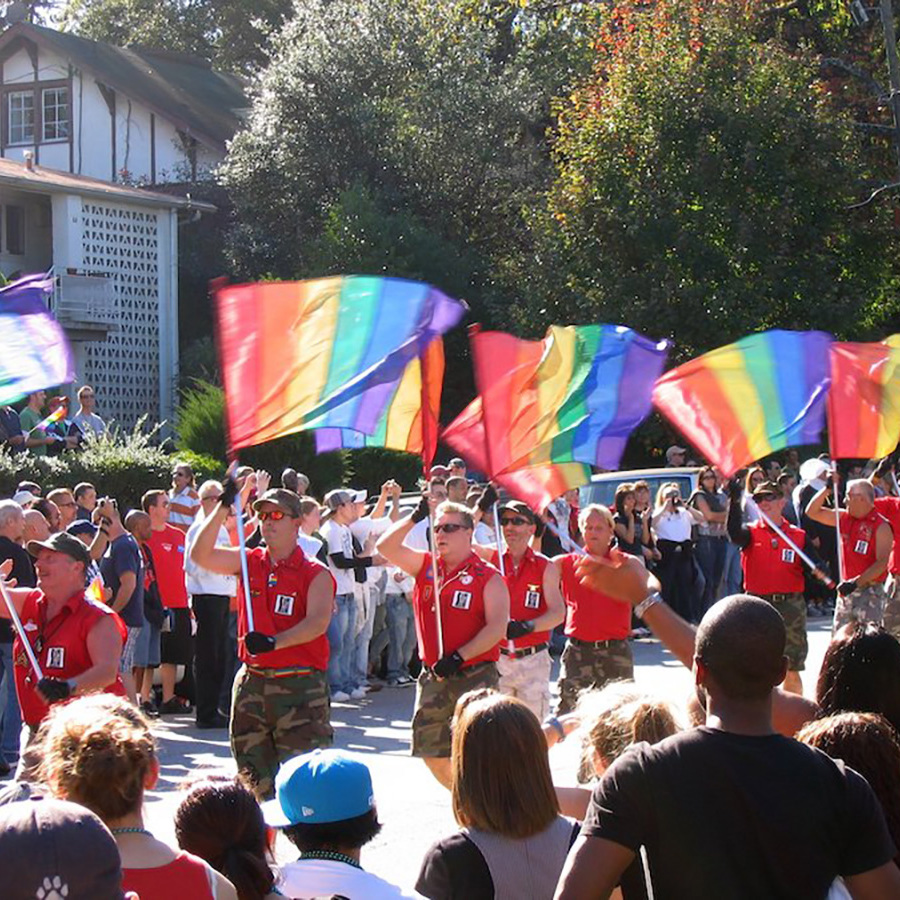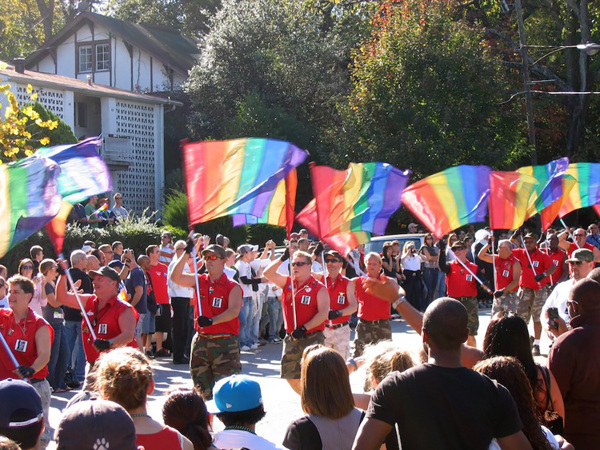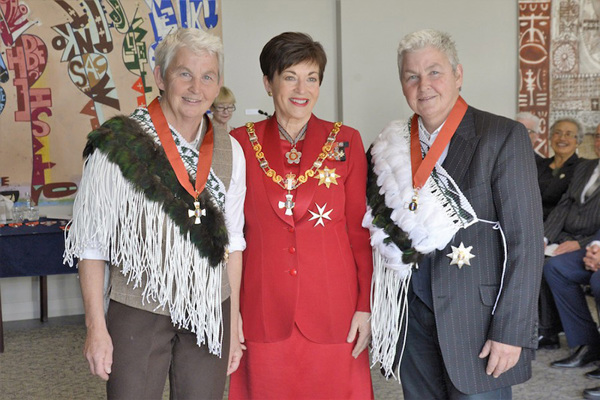
Is a person ‘born gay’, or is being gay a learned behavior?
July 2, 2013

- Related Topics:
- Sexual orientation,
- LGBTQ+,
- Complex traits,
- Environmental influence
A curious adult from the US asks:
“Is a person ‘born gay’, or is being gay a learned behavior?”
Being gay is not a choice for people. Instead, it appears to be a fundamental part of who someone is. It is not a learned behavior. Which also means that people cannot “unlearn” their sexual orientation.
Of course just because we know it isn’t usually a learned behavior, that doesn’t mean that we have a good explanation for what is going on biologically. We don’t.
What we do know is that there isn’t one single gene that explains homosexuality. Something as complicated as sexual orientation is going to involve lots of genes. And not only that, but it will involve the environment too.
Now by the environment I don’t just mean an overprotective mom or a domineering dad. “Environment” is a catchall for everything that isn’t a gene. For instance, what the fetus experienced while in the mother’s womb can affect its development and influence behavior later on in life.
So even though you might expect that the environment only causes temporary changes, that’s not always the case. The environment can cause brains to be wired in a certain way as it develops. This wiring can’t be changed easily.
Right now the best guess is that people inherit a set of genes that makes them more or less likely to respond to something in the environment in a way that causes their brains to be wired so that they are attracted to people of the same sex. Whew! That was a mouthful!
Given all this it sounds like it’d be a nightmare to figure out what is going on biologically. But scientists are starting to make some progress. The most convincing data about the genetic basis of homosexuality comes from looking at twins. Family studies are also giving us a few clues about certain environmental factors.

Studying Twins to Learn Genetics
Some of the best evidence that homosexuality has a strong genetic part comes from twin studies. These studies are useful because they let scientists tease apart how much of a trait is influenced by genetics and how much is influenced by the environment.
They do this by comparing identical twins (who share the same DNA sequence) and fraternal twins (who are only about 50% related, like regular siblings). If a trait were completely genetic, then we’d expect identical twins to always be the same with regard to that trait.
And since both fraternal and identical twins are born and raised in similar environments, any differences seen between them are most likely due to their DNA. So, if a certain trait happens more often between both twins in an identical twin pair compared to a fraternal pair, then genetics probably plays some role in that trait.
Some traits are almost entirely genetic, like eye color. If one identical twin has blue eyes, then the other one will have blue most of the time too.
But if a trait is mostly due to environment, then two identical twins would be just as likely to share the trait as two fraternal twins. Having the same DNA won’t matter because it doesn’t play a big role in that trait.
Tongue rolling is like this. If your twin can roll his or her tongue, it doesn’t really affect your chances. This trait seems to be pretty independent of genes.

Twin studies of homosexuality have shown that identical twins are about twice as likely to both be gay compared to fraternal twins. This means that being gay is partly genetic, and not simply something that a person learns or chooses.
There is one important thing to note, though. If the DNA sequence were the only thing determining whether someone is gay or not, we would expect identical twins to match 100% of the time.
But this is not what scientists have found. If one twin is gay, the other is gay about 50% of the time as well. So while we know that genetics is involved, it doesn’t tell us the whole story. This is where environment comes in.
What is “Environment” Exactly?
What other factors might influence whether someone is gay? Well, one non-genetic thing that seems to make a big difference is the environment a baby experiences in the womb.
When looking at large families, scientists saw that men with lots of older brothers were more likely to be gay. This was true even when the brothers were raised apart from each other, so it isn’t something about the family situation. That means it’s likely something biological.
Scientists aren’t sure what causes this, but one possible explanation is that having all those boys somehow changed the environment in mom’s womb. Now the next boys were more likely to end up with brains wired so they were attracted to other boys.
One thought is that when a mother is pregnant with a boy, her body makes a different set of chemicals and molecules than when she is pregnant with a girl. Each time she gets pregnant with a boy, this “chemical memory” might get stronger, and affect his brain development. This altered brain development then could influence the child’s sexual orientation.

Of course, this isn’t the only environmental explanation for how people are born gay – there are plenty of men with older brothers who are not gay. And there are plenty of gay men with no older brothers! Also, this is only true for men. It doesn’t have any impact on a woman’s sexual orientation.
However, this “fraternal birth order effect” is one of the most striking pieces of evidence to show how genetics and environment can work together to affect sexual orientation.
Scientists are just beginning to figure out how genetics and the environment interact to lead to certain traits. It’s likely that there are even more things like this that we haven’t discovered yet, which also have an influence on sexual orientation.
Same Genetics, Different Outcomes?
Even though the evidence is pretty strong for homosexuality being partly genetic, some people don’t accept it.
One common argument has to do with evolution. The argument commonly goes: If gay men and women are less likely to have babies, they won’t pass on their genes. So any “gay genes” should disappear. Ergo, being gay can’t be genetic.
But this isn’t a good argument. Remember, genes often have more than one effect. Just because a gene affects sexual orientation doesn’t mean that’s the only thing that gene does.
One possible explanation is that the same genes that make a man gay can also make a woman more fertile. So when women have those genes, they are actually more likely to pass them on. It all evens out in the end.
One study looked into exactly this idea. These looked at the female relatives of gay men, both on the mother’s and father’s side. They noticed that female relatives on the mother’s side usually have more children than the female relatives on the father’s side. The same trend was not seen in heterosexual men.
This could mean that there are some genes that are passed down from the mother’s side that make women more fertile and make men more likely to be gay. A woman who’s more fertile will have more kids, which could explain why this trait has survived through so many years of evolution.
This is just one study. There may be other benefits to these genes that we haven’t figured out yet. (And even if there were no benefits, these genes could still linger in the genetic pool for lots of other genetic reasons.)
No matter why those genes are still around, we do know that being gay is partly genetic and partly determined before a baby is even born. This tells us that sexual orientation isn’t a learned behavior or a choice.
Editor’s note (2/8/2021): This article was lightly edited for clarity.

Author: Arielle Yablonovitch
When this answer was published in 2013, Arielle was a Ph.D. candidate in the Department of Biophysics, studying RNA editing in drosophila in Billy Li’s laboratory. She wrote this answer while participating in the Stanford at The Tech program.
 Skip Navigation
Skip Navigation
